|
Confirmed
Keynote
speakers
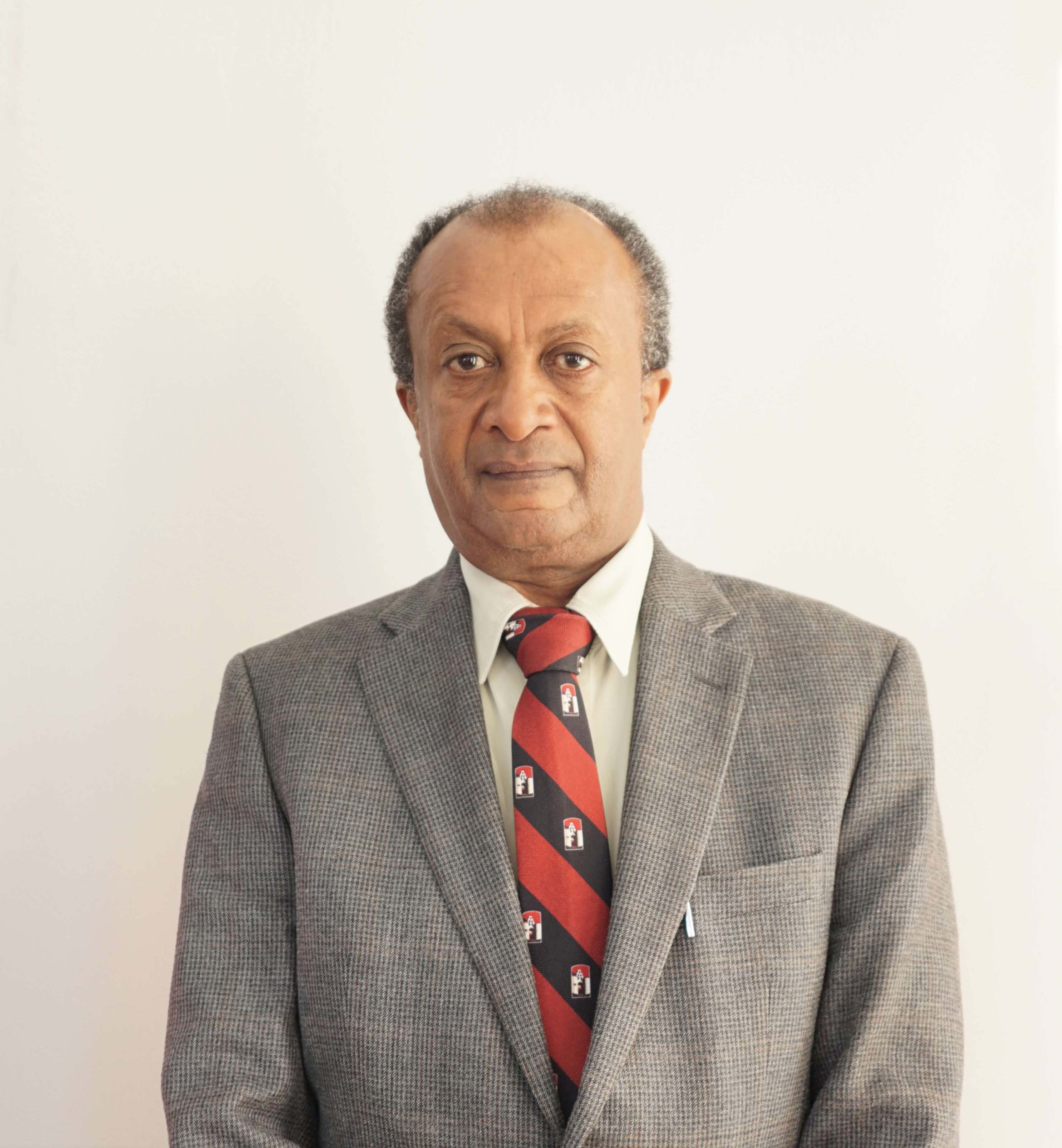 |
Professor
Asfaw Beyene
Department
of Mechanical Engineering
San Diego State University, USA
Academic
Profile:
Dr.
Beyene is Professor of Mechanical Engineering at San Diego State
University. He
earned his doctorate degree from Warsaw University of Technology
in Mechanical and Aerospace Engineering, specializing in jet
engines. He joined San Diego State University (SDSU) in 1989.
His research interests include thermodynamics and renewable
energy, with emphasis on modeling and experimental analyses. His
invention, a flexible wind turbine blade, has been received
enthusiastically across the world, reported by Science in
February 2017. He has attracted close to $10 million dollars in
grants to SDSU. He has published over 120 articles in various
peer-reviewed journals and proceedings.
Dr.
Beyene has received several awards for his scholarship,
including Distinguished faculty - Monty Award, Outstanding
Faculty Award of SDSU, Outstanding contribution from Department
of Energy, Energy Developer of the Year by Association of Energy
Engineers, ASME’s Best Paper Award, and many others. He has
chapters including two in well-known books: Handbook of
Mechanical Engineering and Mark’s Handbook. He is Fellow
member of the American Society of Mechanical Engineers. He is
Associate editor of ASME’s Journal of Energy Resources and
Technology, Guest editor of Journal of Applied Energy, Guest
editor of Energy - the International Journal, Guest editor of
Journal of Energies, and partakes in many other editorials. He
has delivered several invited and keynote speeches. At SDSU, he
serves as Director of the sustainable Energy Center.
Keynote
Lecture
Title: Biomimicry,
the case of morphing blades
Abstract:
Designers have shown great ingenuity in the use of biomimicry,
adopting and emulating unique biomechanical occurrences honed by
millions of years of evolution, as widely observed in nature.
Special pads are modeled after the sticky feet of a gecko enabling
human climbers to scale vertical surfaces. A
kingfisher’s beak that allows it to enter and exit water
bodies without creating a compression wave inspired the bullet
train.
The
study of shark skin and its unique composition has led to many
scientific breakthroughs in transportation as well as in
swimsuits which are now banned from major competitions. By
rearranging the mirrors of concentrated solar power plants in a
pattern similar to the spirals on the face of a sunflower,
engineers reduced the plant footprint by 20% and increased its
power output. The baobab tree, the armadillo’s
impenetrable shell, a bird skull, etc. can be cited as more
examples of successful biomimicry that improved efficiency and
performance of manufactured devices.
Although
in its infancy, the concept of biomimicry has also been embraced
in turbomachinery and energy systems by adopting fish locomotion
and bird aerodynamics. Fin morphing techniques and wing
flexibilities could lead to design concepts which can greatly
improve conversion efficiencies in energy systems.
Application of whale flippers proposed as a design approach to
improve the stall characteristics of wind turbine blades is one
such case in point. In this lecture, a work of the
author’s research team on adaptive turbine blades, spanning
over a decade, is summarized, - culminating with the latest lab
and simulation outputs. These results show that contrary
to contemporary turbine blades, which are rigid chord-wise,
flexible turbines with morphing blades better adjust to variable
operating conditions, thereby reducing flow separation and
improving the power output. Advances in morphing wind
turbine blades and potential efficiency gains will be presented.
|
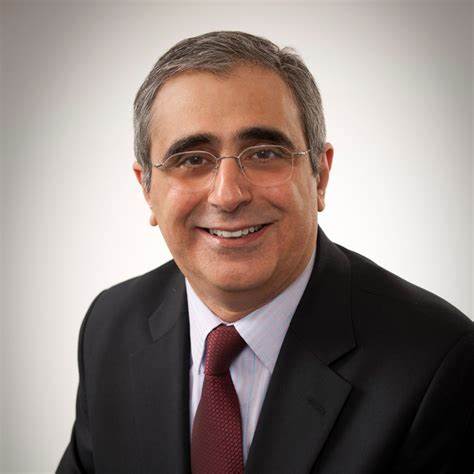 |
Professor
Mohammed
Pourkashanian
Managing
Director of the Translational Energy Research Centre and the
Sustainable Aviation Fuels Innovation Centre
University
of Shefield, United Kingdom
Academic
Profile:
Professor
Pourkashanian OBE is the Head of Energy Institute at the
University of Sheffield, the Managing Director of the
Translational Energy Research Centre and the Sustainable
Aviation Fuels Innovation Centre, holds a chair in Energy
Engineering and is the General Secretary of International Flame
Research Foundation (IFRF).
He
has completed numerous major research projects on clean energy
technology, receiving substantial grants from the EPSRC, EU, and
NATO. His research is in the field of future clean and
sustainable energy technology with a focus on multi-scale energy
processes, zero carbon fuels, and computational and CFD
modelling. He and his students have authored over 498
publications in refereed journals and conference proceedings and
have co-authored several books on solid fuels and biomass
combustion. Professor Pourkashanian has graduated over 87 Ph.D.
candidates and supervised over 40 postdoctoral scholars and
research associates. He is a member of the Industrial Strategy
Challenge Fund (ISCF): Industrial Decarbonisation Advisory Group
responsible for Hydrogen theme, member of Defence Supplier
Forum: SAF workgroup, a Fellow of the Energy Institute and a
Chartered Engineer.
In 2022,
Professor Pourkashanian received an Order of the British Empire
(OBE) for services to Net Zero Research and Innovation.
Keynote
Lecture
Title: The Role of Low/zero Carbon Fuels in the Energy
Transitions to Net Zero
Abstract:
The
energy transition to net zero is one of the most challenging
issues facing industrialised societies today as it will require
widespread changes to both energy supply and demand. Wide range
of low and zero carbon fuels tailored to different energy
sectors are essential parts of achieving net zero target. Low/zero
carbon fuels—in particular, green/blue hydrogen and
Sustainable Aviation fuels offer a variety of potential
solutions. Hydrogen can be used as a fuel on its own to
decarbonise industry, heat and transport, or use as a feedstock
to produce alternative sustainable fuels (e-fuels) with a higher
energy density and can be more easily transported and stored. In
addition, during the initial transition stage these fuels can be
blended with fossil fuels to reduce overall emissions followed
by replace fossil fuels entirely, without requiring expensive
changes to energy systems transportation and storage
infrastructure.
The
presentation will explore the role of low/zero carbon fuels such
as hydrogen and e-fuels on energy transition focusing on technical
challenges and opportunities on production and utilisation. We
will also examine role of hydrogen as a feedstock to produce
sustainable fuels to decarbonise “hard-to-decarbonise”
sector such as aviation. The presentation will suggestion on
what form is appropriate for what use and how to initiate the
production and deployment of these sustainable fuels.
|
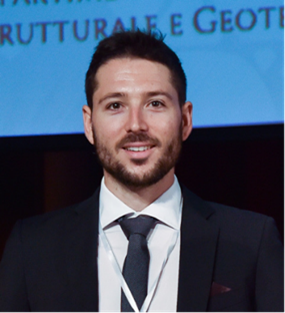 |
Assoc.
Prof. Nicholas Fantuzzi
University of Bologna,
Italy
Academic
profile:
Nicholas Fantuzzi is Associate Professor in Mechanics of
Solids and Structures at the University of Bologna, Italy. His
research portfolio includes over 220 published works on
composite laminated structures and innovative materials, fracture
mechanics and crack propagation and initiation in metallic
and composite materials. His work on mathematical modelling
through classical finite elements as well as mesh-free and
collocation methods has high impact in Engineering
Science.
Nicholas is Co-Editor-In-Chief of "Composites Structures”
international journal and Section Editor-In-Chief (Engineering
Section) of "Mathematical and Computational Applications”
international journal, Editorial Board Member in 17 international
journals, Guest Editor and Co-Editor of 11 Special Issues on international
journals, and Reviewer for 108 international journals. He has been
conference chair and Keynote speaker in many international
conferences.
Keynote
Lecture
Title:
Sustainability
and Renewables in Offshore Environment: recent modelling
challenges
Abstract:
Offshore structures are
known to be used for extracting natural gas and oil from the sea
bed. However, when the underground source finishes, these
structures should be moved to another location or removed if
they have reached their design life. Removal operations go under the
name of decommissioning which is a multidisciplinary process by
which a Company decides on how to shut down the field activities
at the end of the structure life: plugging and abandoning
the well(s), making the equipment/installation safe, removing
some or all the facilities and restoring the area.
Decommissioning will occur at different stages of asset
lifecycle and has wide relevance in terms of reputation, so it
needs to be managed properly as a dedicated business
process. Nevertheless, another solution might be considered:
change the future working life of these platforms by
involving renewable energy and transforming them, for instance,
into offshore wind towers. This activity involves retrofitting activities
in order to strengthen the original structural elements in order
to carry new loads. All the aforementioned operations involve
structural modeling which can be carried out at global and
local scales. Such degrees of complexity might be time consuming
for companies that in general have limited time to make
decisions in the initial phases of these operations and want to
save money. Therefore, in this talk some modeling aspects
about the sustainability of installations for renewables sources
are discussed together with recent modelling challenges.
|

|
Professor Odne S. Burheim
Department
of Energy and Process Engineering
Norwegian
University of Science and Technology (NTNU), Norway
Academic
Profile:
Professor Odne Burhem, the Norwegian University of science and
technology - NTNU, is an expert in electrochemical energy
storage and e-fuels. He leads of the sustainable energy systems
research division in Dep. Energy and Process Engineering, has
published over 130 peer reviewed scientific articles and book
chapters, supervised more than 30 PhDs and post doctoral
researchers, and lectures energy for vocational, bachelor,
master and PhD students. His activities in research and
education covers the entire lithium ion battery value chain,
including life cycle studies, digitalisation, recycling,
material development, manufactruing, systems integration and
advanced characterisation techniques.
See also official
profile her and recent chronicle in Teknisk
Ukeblad her.
Keynote Lecture
Title: Lithium
ion batteries, the basics and some trends ahead
Abstract:
Production
of Lithium ion Batteries (LIB) has doubled about every 3rd year
for more than a decade, and is forecasted to continue doubling
at the same interval for at least another decade.
LIB is a
general term covering a family of different materials put
together in different formats of batteries. LIB functionality
follows some basic principals in terms of the electrodes
reactions, where a transition metal (Fe, Co, Mn, Ni) reacts in
the cathode and Li reacts in the cathode by exchanging electrons
to electric devices outside the LIB. Design of commercial cells
depend on capacity of the cell, termed in Ah (amount of charge)
or Wh (amount of energy), and the main difference lies in the
assembling process.
Modern
production of batteries has eventually come into a transition
phase, where the major challenges ahead appear to be focusing on
quality, yield, scrap rates, and circularity. Conventional
battery production is currently well established in Asia, and it
is a relatively new and emerging process in Europe and North
America. As this is an exponentially growing market (doubling
every 3rd year), a field with much room for disruption, and a
high quality, and high value market; battery production as an
area is experiencing lots of interest from political points,
financial points and academic points.
The
presentation will give a brief introduction to the basics of LIB
concepts, technological opportunities, and motivation behind
political and financial interests.
Some
examples literature for further reading:
·
Traditional
battery production
·
Aspects
around new manufacturing methods of LIB
(Open source)
·
Analysis
of future battery global markets
(Open source)
|
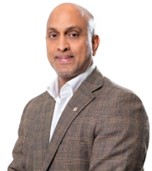
|
Professor
Jayantha
Prasanna Liyanage
Department
of Mechanical & Structural Engineering and Materials
Technology
University
of Stavanger, Norway
Speaker's
academic profile:
https://www.uis.no/nb/profile/jayantha-prasanna-liyanage
Keynote
Lecture
Title: Engineering
the Future of critical Assets and Infrastructures under Emerging
uncertain conditions
Abstract:
Industrial,
economic, and societal aspects generate unprecedented demands
and challenges towards critical Engineering assets and
infrastructures in public and private sectors. They will
continuously be exposed to a range of latent and uncertain
conditions where engineering and operational boundaries get
pushed and tested in numerous ways. The critical questions under
such emerging contexts are; what is this rapidly emerging
Engineering future of critical Engineering assets and
infrastructures? where are the real pressure points ? what does
it take to ensure engineering and operational robustness of
those Engineering assets and infrastructures?
.
|
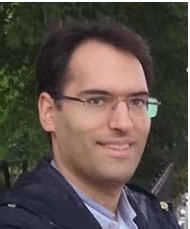
|
Professor
José
A.F.O. Correia
Institute
of Science and Innovation in Mechanical and Industrial
Engineering,
University
of Porto, Portugal
Speaker's
academic profile:
José
A.F.O. Correia is currently a Researcher at CONSTRUCT|Faculty
Engineering and INEGI of the University of Porto (UPorto |
Portugal). Since 2018, he is a Guest Teacher at the Engineering
Structures Department of the Civil Engineering and Geosciences
Faculty of the Delft University of Technology (Netherlands).
He is
co-author of more than 210 scientific journal papers in the most
relevant scientific journals devoted to structural integrity,
fatigue, and fracture of engineering materials and structures,
more than 200 proceedings in international and national
conferences, congresses, and workshops. He co-authored 18 book
chapters, and editor and/or co-author of 22 books (15 completed;
7 ongoing). In the Scopus platform, he is the (co)author of 316
scientific documents and has an h-index equal to 38 (33,
excluding self-citations).
Correia is
Co-Editor-in-Chief of the Alexandria Engineering Journal,
International Journal of Structural Integrity, Smart
Infrastructure and Construction, and Structural Integrity
(Series), Associate Editor of Heliyon, Philosophical
Transactions A - Engineering Sciences, Marine Systems and Ocean
Technology, and Frontiers in Materials, and, Section
Editor-in-Chief of Modelling MDPI, among others participations
in editorial boards of scientific journals (e.g. International
Journal of Fatigue, Engineering Failure Analysis, Forces in
Mechanics, Ships and Offshore Structures, Practice Periodical on
Structural Design and Construction, Journal of Infrastructure
Preservation and Resilience, Materials, Energies, Applied
Sciences, Applied Mechanics, Journal of Marine Science and
Engineering, Mathematical and Computational Applications,
Advances in Mechanical Engineering, Advances in Computational
Design, Materials Open Research, Materials Science, Forensic
Engineering, etc.). In
2017 and 2020, respectively, José A.F.O. Correia was appointed
as a co-chairman of the technical committees called ESIS TC12
– Risk Analysis and Safety of Large Structures and Components
and ESIS TC3 – Fatigue of Engineering Materials and Structures
of the European Structural Integrity Society (ESIS). José
A.F.O. Correia is a member of technical committees,
CEN/TC250/SC3 WG 1-9 Fatigue, CEN/TC250/SC3 WG 1-10 Fracture,
and CEN/CLC/JTC20 Hyperloop Systems, of the European Committee
for Standardization (CEN).
He was/is
also a team member of the organization and participation in
approved national and European research projects (27 research
projects, >100 million €). He was/is the (co)coordinator at
FEUP of 7 R&D projects and consulting services (university
extension) budgeted in more than 1.000k€ and 190k€,
respectively. In business activities, he was involved in
approved investment projects budgeted more than 720 k€.
Further info is
available here: https://sigarra.up.pt/feup/en/FUNC_GERAL.FORMVIEW?p_codigo=597769
Keynote
Lecture
Title:
Promoting multiscale fatigue to design reliable and
sustainable structures
Abstract:
This
keynote speech describes the author's experience in experimental
research, numerical modelling, and developing models for
characterising fatigue behaviour in metallic materials. The
advances made in material fatigue characterisation range from
micro to macro physical scales. In structural fatigue design,
the fatigue behaviour of structural components and large-scale
engineering structures is often assessed using probabilistic
approaches and modelling at various physical scales due to time
and cost constraints on test equipment. This is derived from the
mechanical properties of normalized small-scale specimens.
Design code approaches typically estimate the structural
component's life by averaging the lifetime of the most stressed
points on the component and adding safety factors to account for
dispersion bands, size effects, stress field uncertainties, and
different environments. However, this approach may not be
accurate enough, leading to designs that are either too
conservative or too optimistic. Currently, it is increasingly
urgent to model the fatigue properties of small-scale samples
for the strength of structural components at various physical
scales. This must take into account loading effects,
environmental effects, and probabilistic analysis in order to
make structures reliable and sustainable. The keynote focuses on
the author's experience in characterising the fatigue behaviour
of metallic material, including experimental and probabilistic
models for fatigue resistance and crack propagation. The author
also discusses integrated fatigue approaches for structural
components, modelling based on fracture mechanics, and fatigue
damage assessment of engineering structures such as bridges,
offshore platforms, etc. Additionally, two technical works
related to fatigue damage assessment are presented.
Acknowledgements:
This
research was supported by: project grant
(PTDC/ECI-EST/30103/2017) FiberBridge - Fatigue strengthening
and assessment of railway metallic bridges using
fiber-reinforced polymers by FEDER funds through COMPETE2020
(POCI) and by national funds (PIDDAC) through the Portuguese
Science Foundation (FCT/MCTES); base funding - UIDB/04708/2020
and programmatic funding - UIDP/04708/2020 of the CONSTRUCT -
Instituto de I&D em Estruturas e Construções - funded by
national funds through the FCT/MCTES (PIDDAC); AARM4 - High
Strength Steels in Metalmechanics 4.0
(POCI-01-0247-FEDER-068492) funded by national funds through the
PT2020/COMPETE; project grant (UTA-EXPL/IET/0111/2019)
SOS-WindEnergy - Sustainable Reuse of Decommissioned Offshore
Jacket Platforms for Offshore Wind Energy by national funds
(PIDDAC) through the Portuguese Science Foundation (FCT/MCTES);
project grant (MIT-EXPL/SOE/0054/2021) - Hyperloop-Verne -
Exploratory Analysis of Biomimetic-inspired Oceanic Hyperloop
Transport Infrastructures, funded by national funds through the
FCT/MCTES (PIDDAC), under the MIT Portugal Program; among
others. José Correia would like to thank the individual project
grant (2020.03856.CEECIND) awarded by national funds (PIDDAC)
through the Portuguese Science Foundation (FCT/MCTES). This work
is also a result of Agenda “NEXUS: Innovation Pact Digital and
Green Transition – Transports, Logistics and Mobility”, nr.
C645112083-00000059, investment project nr. 53, financed by the
Recovery and Resilience Plan (PRR) and by European Union -
NextGeneration EU. Additionally, the author would like to thank
the institutions – University of Porto (FEUP), Institute of
Construction (IC), Institute of Science and Innovation in
Mechanical and Industrial Engineering (INEGI), University of
Coimbra (UC), and University of Trás-os-Montes and Alto Douro
(UTAD) - for the support that allowed the development of a large
part of the scientific work presented. Finally, a special thanks
to my masters and doctoral students, as well as to the
professors and researchers who collaborated with me, in
particular, Prof. Abilio De Jesus, Prof. Rui Calçada, Prof.
Pedro Moreira, Prof. Alfonso Fernández-Caneli, Prof. Grzegorz
Lesiuk, Prof. Shun-Peng Zhu, Prof. Hao-Hi Xin, Prof. Nicholas
Fantuzzi, and Prof. Lance Manuel, for the tireless support shown
in the research activities carried out in projects managed by me
or projects managed by them. I don't want to finish without ever
forgetting the tireless support of my family, especially Maria
João for her patience and dedication at all times.
|
|